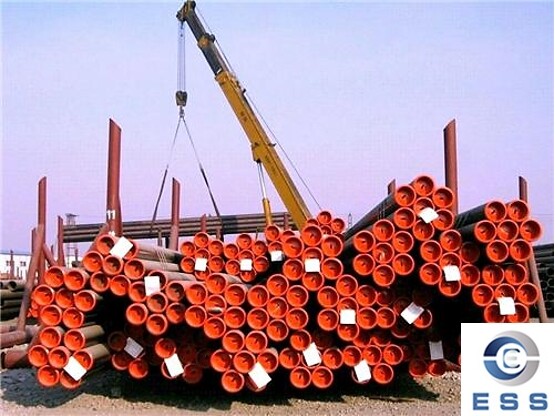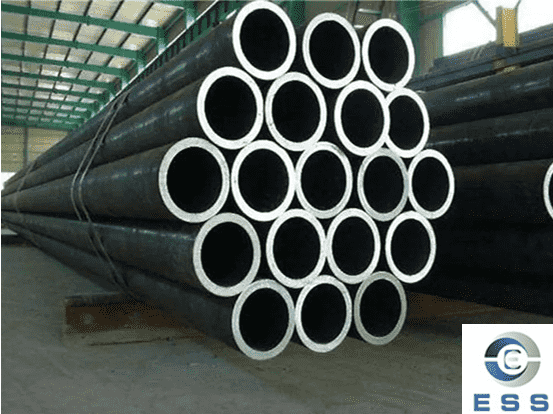
What is line pipe?
Line pipe is a kind of pipeline used to transport oil, gas and
water, mainly used in the oil and gas industry. The main function of line pipe
is to transport oil, gas and water extracted from the ground to oil and gas
industrial enterprises through pipelines. It includes two types of seamless
pipe and welded
steel pipe, and the pipe ends are in various forms such as flat ends,
threaded ends and socket ends. Its connection methods are diverse, including
end welding, coupling connection, socket connection, etc. Its main features are
pressure resistance and corrosion resistance.
Line pipes can be divided into
different grades and specifications according to different uses and pipeline
design standards. At present, the commonly used international standards for
line pipes are API 5L, ISO 3183, etc., while the domestic standard adopts GB/T
9711. The manufacturing process of line pipes is generally divided into hot
rolling and cold drawing. Among them, hot-rolled line pipes have a smooth
surface and are widely used, but the cost is high; cold-drawn line pipes have a
high surface finish, long service life and low cost.
What is OCTG pipe?
OCTG pipe refers to a pipe used for
underground extraction of oil, natural gas, etc. Its main features are smooth
inner and outer walls, high pressure resistance, and strong corrosion
resistance. The slight difference is that the steel properties of OCTG pipes
correspond to line pipes. Similarly, OCTG pipes also have various
specifications and grades according to the requirements of downhole operations
and drilling processes. OCTG pipes include drill pipe, API 5CT casing pipe, oil
pipes and other pipes.
The manufacturing process of OCTG pipes includes hot
rolling of steel plates, fine burr processing of pipe billets, rolling,
straightening, synthesis, welding, cleaning, dimensional inspection and other
links. Among them, the manufacturing difficulty of OCTG pipes is greater than
that of line pipes, so its production cost is also relatively high.
What is the difference between line
pipes and OCTG pipes?
1. Uses and characteristics
1) Line pipes
Mainly used for long-distance transportation of oil and natural
gas, usually used to connect oil wells and natural gas processing facilities.
Line pipes can be seamless pipes or welded pipes, and their pipe ends have flat
ends, threaded ends and socket ends. The connection methods include end
welding, coupling connection, socket connection, etc.
2) OCTG pipe
Steel pipes specially used for oil and gas extraction, including
oil pipe, casing pipe and drill pipe. Most OCTG pipes are seamless pipes, but welded pipes also
account for a considerable proportion. They play a key role in the process of
oil and gas extraction, such as oil pipes are used to transport oil from the
oil layer to the ground, casing is used to fix the well wall of the oil well,
and drill pipes are used for drilling.
2. Material and performance
1) Line pipe
Usually made of high-strength steel, it can withstand high
pressure and high temperature environment. Its chemical composition, tensile
properties, yield strength and hardness are strictly required to ensure
stability and safety during transportation.
2) OCTG pipe
According to the API grading method, OCTG pipes are divided into
different steel grades and specifications, from low steel grades to high steel
grades. OCTG pipes of different steel grades have different metal element
compositions and performance requirements to meet different mining needs.
Summary
In general, there are certain differences
between line pipe and OCTG pipe in terms of physical properties, uses,
production processes, etc., but both are indispensable and important materials
in the oil and gas industry, providing a solid guarantee for the exploitation
and transportation of oil and gas.













 Eastern Steel Manufacturing Co.,Ltd not only improve product production and sales services, but also provide additional value-added services. As long as you need, we can complete your specific needs together.
Eastern Steel Manufacturing Co.,Ltd not only improve product production and sales services, but also provide additional value-added services. As long as you need, we can complete your specific needs together.










